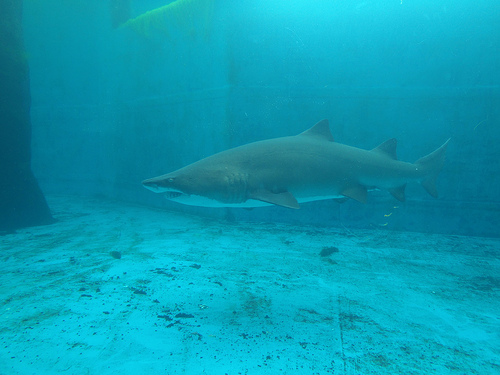Ten Most Interesting Facts About Mars
There has been a lot of hype lately surrounding the Red Planet. NASA was recently successful in landing the Curiosity rover on the planet’s surface, marking another great
milestone in the space program’s history.
The reasons that make this a special event are numerous: First, the rover is the size of a small car; it weighs almost one ton and was lowered to the surface using a synchronized ballet of landing sequences involving parachutes, perfectly timed rocket bursts, and a ‘sky crane.’ Second, the rover is expected to explore the Martian surface for at least two years, the longest ever-planned rover mission. Lastly, and most important, it has over ten advanced instruments to look for signs of life as well as search for evidence that the planet can (or did) support life.
So, to celebrate the landing of the rover Curiosity, here are the ten most interesting facts about Mars and why some may help us in the search for answers and extraterrestrial life.
10
Mars has long piqued our curiosity about extraterrestrial life
In 1877 Italian astronomer Giovanni Schiaparelli studied Mars and made note of what he thought looked like canali, or channels on the surface. This was misinterpreted to mean canals, which many thought to indicate intelligent life. In 1939, Orson Welles’s radio theater company performed a production based on HG Wells’s book “War of the Worlds”. This caused a panic, as many people did not realize the event was a play and took it as a real news broadcast.
9
Mars has gravity and a magnetic field
Mars may only have half the diameter of Earth (about 4212 miles), and one tenth Earth’s mass, but Mars’s gravity is about one third that of Earth. Its core is thought to be similar to Earth’s, though it is likely smaller due to the planet’s size. Mars still has a magnetic field like Earth, but it is much weaker. This indicates a solid core unlike Earth’s, which has a liquid core and mantle.
8
Mars has a rocky surface
Like the other “terrestrial” planets – Mercury, Venus, and Earth – Mars has a surface that was formed by volcanism, impacts from meteors and comets, and continuous movements in its crust. The planet therefore is still changing geographically and may mean it will continue to evolve and become more hospitable.
7
Mars has diverse geological features
Mars has some amazing natural formations. Olympus Mons rises 27 kilometers above the surface and is the largest volcano in the Solar System. It may even still be active. Mars also has the longest and deepest canyon in the solar system. Called Valles Marineris, the canyon stretches 4,000 kilometers along Mars’ equator. It is also roughly 4.5 times as deep as the Grand Canyon!
6
Mars has large amounts of water
NASA’s Mars Odyssey spacecraft has detected water underneath the surface of Mars. In addition to the polar ice caps, scientists think there may be enough water on Mars in liquid or ice form to fill Lake Michigan twice.
[adsense]
5
Mars has seasons
Mars has similar seasons to Earth thanks to a tilt in its axis. Mars can be much colder, but the polar ice caps fluctuate in size between summer and winter, just like Earth’s. Mars occasionally is tilted closer to the sun, creating warmer summers than usual. However, because Mars is farther away from the sun than Earth, its seasons last twice as long.
4
Mars has an atmosphere
Mars has an atmosphere, but it is quite thin when compared to Earth’s. However, it consists of 95 percent carbon dioxide (which is a greenhouse gas in which plants flourish), 3 percent nitrogen and only trace amounts of oxygen. Therefore, though not suitable for humans, plant life could feasibly grow in its atmosphere given better temperature and soil conditions.
3
Mars has weather
Thanks to the previous two reasons, Mars has weather just like here on Earth. Temperatures can range from a mild 72 degrees F in the summer to minus 205 degrees F in winter. Average temperature is around minus 85 degrees F. Unfortunately, the surface of Mars is extremely dusty and dry, so it is prone to huge dust storms. Storms on Mars have winds up to 125 mph and can last for weeks.
2
Mars is the most visited planet by satellites and probes
Given all the conditions that may support life, Mars has become the favorite destination for humanity to send its robotic probes. What started as flybys in the early 1960s has led to landings by the US and Russia as well as attempts by other countries to send probes. In all almost 50 missions have been conducted. The most successful to date is the Opportunity rover, which is still operational on Mars after eight years and 35 kilometers traveled!
1
Mars will be explored by humans by 2040
If all goes as planned NASA will send astronauts to Mars in the 2030s. This will usher in a new era for space exploration and for all of humanity. By then there will hopefully be even more intriguing facts learned about our planetary neighbor in the Solar System.
Source: About: Space



